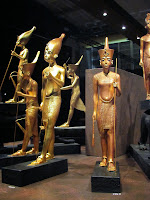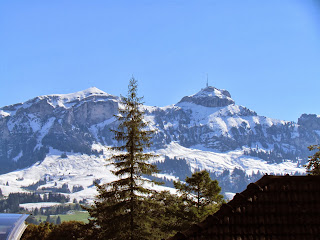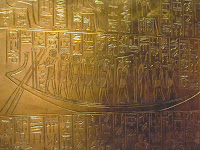 A few weeks ago, I took a trip to Bern to see the Christmas light show. The Bundeshaus is the Swiss parliament building. The light show was projected onto the Bundeshaus while they tell a story. This year the story was about a princess who didn't want to have children...I think. It was of course in Swiss German and I didn't quite understand it all. However, the light show was very nice.
A few weeks ago, I took a trip to Bern to see the Christmas light show. The Bundeshaus is the Swiss parliament building. The light show was projected onto the Bundeshaus while they tell a story. This year the story was about a princess who didn't want to have children...I think. It was of course in Swiss German and I didn't quite understand it all. However, the light show was very nice. Lost in Switzerland ~ A Foreign Adventure
This blog started out as a New Year's resolution in 2010 where I had a new adventure every week. At the time I was living in Raleigh, North Carolina. After the first year, I found myself living and working in Switzerland and continued the blog. I moved back the USA for a while but ended up back here in Switzerland to stay. This blog is mainly for my family and friends who want to know what's going on across the pond. The adventure continues while I'm lost in Switzerland.
Spring Water

Quotes
Life is either a daring adventure or nothing ~ Hellen Keller
Home is not where you live, but where they understand you ~ Christian Morganstern
Home is not where you live, but where they understand you ~ Christian Morganstern
Sunday, November 24, 2013
Bundeshaus Bern - Light Show Spectacular
 A few weeks ago, I took a trip to Bern to see the Christmas light show. The Bundeshaus is the Swiss parliament building. The light show was projected onto the Bundeshaus while they tell a story. This year the story was about a princess who didn't want to have children...I think. It was of course in Swiss German and I didn't quite understand it all. However, the light show was very nice.
A few weeks ago, I took a trip to Bern to see the Christmas light show. The Bundeshaus is the Swiss parliament building. The light show was projected onto the Bundeshaus while they tell a story. This year the story was about a princess who didn't want to have children...I think. It was of course in Swiss German and I didn't quite understand it all. However, the light show was very nice. Sunday, November 3, 2013
Tutankhamun in Geneva
 This week I ventured to Geneva which is in the west, French-speaking part of Switzerland. I went there because I had seen online that they were having an expo on Tutankhamun. While the artifacts were all fake, they were replicas of everything that was found in Tut's tomb when it was discovered by Howard Carter in 1922. Perhaps someday I will make it to see the real artifacts, but until then this was fascinating!
This week I ventured to Geneva which is in the west, French-speaking part of Switzerland. I went there because I had seen online that they were having an expo on Tutankhamun. While the artifacts were all fake, they were replicas of everything that was found in Tut's tomb when it was discovered by Howard Carter in 1922. Perhaps someday I will make it to see the real artifacts, but until then this was fascinating!The tomb of King Tut (as he is commonly known) is the only pharaoh tomb to be found that was almost intact - meaning it had not been badly looted as many of the other tomb's in the Valley of the Kings in Egypt.
Tutankhamun became pharaoh of Egypt at a young age (9 or 10). He died at age 19 apparently from getting run over by a chariot. This cause of death was just announce today believe it or not. For more on that visit: http://www.independent.co.uk/news/science/solved-the-mystery-of-king-tutankhamuns-death-8919262.html.
 He was buried in a series of 4 gold-leafed wooden boxes. To the left is the inside of the largest one. On the bottom of the shrine is shown the footprint of the other 4 gold-leafed boxes, the stone sarcophagus, and the outer golden coffin.
He was buried in a series of 4 gold-leafed wooden boxes. To the left is the inside of the largest one. On the bottom of the shrine is shown the footprint of the other 4 gold-leafed boxes, the stone sarcophagus, and the outer golden coffin.
To the right is a picture of the 2 of the other 3 gold-leafed shrines.

These are details of the design work on the gold-leafed shrines. It is quite impressive!
The first coffin is made entirely of gold. Although you can't see the top, it has the "eternal" face of Tutankhamun on it. I say eternal face because he really didn't look like this. Above is the face from the second coffin.


To the left is the open third coffin which contain the remains of Tutankhamun. He wore the golden mask that is now so famous as well as many other jewels.
To the right is the coffin of one of King Tut's daughters. He had 2, both of which were stillborn therefore leaving no heir.


To the left are small coffins that contained the vital organs of the pharaoh. These were the heart, lungs, stomach, and intestines. The heart is missing from King Tut. It is thought that the heart was too damaged to preserve (according to the article above). Each of these coffins was then placed inside a stone tube as shown on the right. This also had the face of the pharaoh. These tubes were placed inside another stone box which was then place inside a gold-leafed box seen in the background.


The burial, the tomb, and the artifacts were all so the pharaoh could journey to the afterlife. He was buried with cloths, shoes, his throne, ships, weapons, and food that was all to help him during his eternal life in the afterlife.
In general he was buried with very expensive thing many of which were made of gold.

 I also made a quick stop to look at the United Nations. I couldn't see much with the security and fences and the like. I was disappointed that none of the country flags were flying. But I took a picture anyways and moved on.
I also made a quick stop to look at the United Nations. I couldn't see much with the security and fences and the like. I was disappointed that none of the country flags were flying. But I took a picture anyways and moved on. Finally I made my way to the Patek Phillipe Museum. It showcases time-pieces from the 1500's through today. I was quite interesting to see how watches have evolved. I wasn't allowed to take anything into the museum with me. I was "buzzed in" at the door. You can see the door man in the picture. They also had security throughout the museum walking around to spy on everyone. Obviously this mean no pictures. If you are really curious to the insane intricacy of some of these watches, here's the link : http://www.patekmuseum.com/main.asp
Finally I made my way to the Patek Phillipe Museum. It showcases time-pieces from the 1500's through today. I was quite interesting to see how watches have evolved. I wasn't allowed to take anything into the museum with me. I was "buzzed in" at the door. You can see the door man in the picture. They also had security throughout the museum walking around to spy on everyone. Obviously this mean no pictures. If you are really curious to the insane intricacy of some of these watches, here's the link : http://www.patekmuseum.com/main.aspTuesday, October 29, 2013
No-Bake Cookies and Other American Food
 Today, I decided to make some no-bake cookies. This is the second time I have tried to make these in Switzerland. Unfortunately, I have gotten the same result both times. While they look like no-bakes, smell like no-bakes, and even taste like no-bakes, the oatmeal will break your teeth. I have had the worst time finding "quick oats" in Switzerland. I have gone to all sorts of specialty shops and tried several different brands, none of them work for no-bakes.
Today, I decided to make some no-bake cookies. This is the second time I have tried to make these in Switzerland. Unfortunately, I have gotten the same result both times. While they look like no-bakes, smell like no-bakes, and even taste like no-bakes, the oatmeal will break your teeth. I have had the worst time finding "quick oats" in Switzerland. I have gone to all sorts of specialty shops and tried several different brands, none of them work for no-bakes. So I decided to look online to see if anyone knew where to buy some good oatmeal and I found this website: http://www.afoodave.ch/. The prices will "knock your socks off". They have a lot of thing that I could buy that I don't normally get here - Pop-Tarts, Cheerios, Red Mill hot cereals, Ranch dressing, Frank's Red Hot, Marshmallow, and so much more. I could spend a fortune in this store.
For example: With exchange rate as of today. CHF is Swiss Franc for those of you wondering.
1 Box of Betty Crocker Brownie Mix is CHF 5.95 = $6.63
1 12oz. Can of A&W Root Beer is CHF 1.35 = $1.50
1 Bottle of Blue Cheese Dressing (I love Blue Cheese) is CHF 3.95 = $4.40
I know you have heard me complain about mayonnaise before and here it is for a steep price:
1 15oz. Jar of Hellmann's Mayonnaise is CHF 6.90 = $7.68
And finally the thing I was looking for:
1 42oz. box of Quaker Quick Oats CHF 10.95 = $12.20
Would I pay these prices? Probably, because I really like no-bake cookies and the oatmeal in Switzerland sucks!
On the bright side, I now know where I can get some American goodies!
Sunday, October 27, 2013
Swiss Sugar
Yesterday, we went to celebrate 100 years of Swiss sugar at a sugar factory in Frauenfeld - Zuckerfabrik. I have been told that Switzerland turned to the production of its own sugar because of problems importing it during WWI. After that Switzerland vowed to be self-sufficient in certain products, one of which is sugar. Sugar in Switzerland comes from sugar beets.
All of the sugar produced by Zuckerfabrik is used in Switzerland; none of it is exported. Between 15% and 20% of the sugar is sold as sugar in packets or cubes. The rest is used in food production in Switzerland.

The process goes like this:
1. The farmers plant sugar beets. Around 7,500 farmers plant 16,000 hectares of sugar.
2. It is harvested and shipped to the sugar factory. The sugar beets are dumped on a large cement basin that has a ditch at one end.
3. Using water, the beets are slowly moved into a canal. The canal leads to a series of conveyers and mixers which all help to clean the dirt from the sugar beets.
 4. After washing the sugar beets are cut and sugar juice is extracted. The extracted sugar juice is processed in several cycles until it is refined. Both sugar juice and white sugar crystals are sold as product.
4. After washing the sugar beets are cut and sugar juice is extracted. The extracted sugar juice is processed in several cycles until it is refined. Both sugar juice and white sugar crystals are sold as product.
5. The product is then shipped out by truck and by train.

6. The dirt from washing and the pulp from cutting the beets are not wasted. These are turned into high quality potting soils, fertilizers, and animal feed. Above the machine is wrapping the pulp.
At the end of the tour, we each received a free beer, a free bratwurst, a free bag with a kilo of sugar, and free ice cream and cotton candy. Never in America would you receive this after going on a free factory tour. *Only in Switzerland*
All of the sugar produced by Zuckerfabrik is used in Switzerland; none of it is exported. Between 15% and 20% of the sugar is sold as sugar in packets or cubes. The rest is used in food production in Switzerland.

The process goes like this:
1. The farmers plant sugar beets. Around 7,500 farmers plant 16,000 hectares of sugar.
2. It is harvested and shipped to the sugar factory. The sugar beets are dumped on a large cement basin that has a ditch at one end.
3. Using water, the beets are slowly moved into a canal. The canal leads to a series of conveyers and mixers which all help to clean the dirt from the sugar beets.
 4. After washing the sugar beets are cut and sugar juice is extracted. The extracted sugar juice is processed in several cycles until it is refined. Both sugar juice and white sugar crystals are sold as product.
4. After washing the sugar beets are cut and sugar juice is extracted. The extracted sugar juice is processed in several cycles until it is refined. Both sugar juice and white sugar crystals are sold as product. 5. The product is then shipped out by truck and by train.

6. The dirt from washing and the pulp from cutting the beets are not wasted. These are turned into high quality potting soils, fertilizers, and animal feed. Above the machine is wrapping the pulp.
At the end of the tour, we each received a free beer, a free bratwurst, a free bag with a kilo of sugar, and free ice cream and cotton candy. Never in America would you receive this after going on a free factory tour. *Only in Switzerland*
Tuesday, October 15, 2013
Spazieren Appenzell
On Sunday, my husband and I went for a walk (spazieren). To get out of the fog, we drove to Appenzell. It was a crisp, but sunny day with an amazing view. Not much to say, but the pictures are lovely!
 |
| This is on the play ground. What a simple but interesting idea! |
 |
| We walked path 992. The abundance of signs in Switzerland makes it easy to find you way when walking or hiking. |
 |
| I found it interesting that this bull has a nose ring with spikes. I read that it is easy to control the bull this way. However, I don't know what the spikes are for. |
 |
| Some folks on a buggy ride for the afternoon. |
 |
| What do you see that is interesting about this picture? You can comment below. |
 |
| Santis! |
Subscribe to:
Comments (Atom)






























